 June 19, 2013 Editor: Ward Silver, NØAX | |||||||
IN THIS ISSUE
NEW HF OPERATORS - THINGS TO DO Field Day - not really a contest unless you want it to be a contest - is a two-way opportunity for hams new to HF. Opportunity number one is to learn more about HF operating! You can get "chair time" on phone, CW, or digital as an operator or assistant so have at it. Opportunity number two is to mentor (a.k.a. "Elmering") another new ham, whether licensed for HF or not, so they learn about HF, too. You understand their questions and need for information better than any of us old-timers, so help another ham onto the HF Express! BULLETINS Tree N6TR writes in to note that the log-checking robot for the Summer Stew contest has been properly re-configured. If you sent in a log and got a reject message - please resubmit. BUSTED QSOS The URL for the Amateur Radio High-Altitude Ballooning website is arhab.org, not arhab.com. (Thanks, Art W4AA) CONTEST SUMMARY Complete information for all contests follows the Conversation section June 22-23
June 29-30
CQ World Wide Contest Director, Randy K5ZD reports, "On May 31 the CQ WW DX Contest Committee released a preliminary draft of the 2013 contest rules and asked for public review and comment. We are very happy with the interest and feedback that we have received. There have been enough changes made based on the feedback that we want to release a second draft in order for review." In addition, he also notes that, "The results of the CQWW Participant Survey are now available for public download. The PDF file contains 222 pages of results and the comments submitted along with the survey. It provides some interesting insights into how contesters view the CQWW from the perspective of various geographic and operating interests. Thanks to everyone that responded to the survey. The inputs did influence the new 2013 rules draft that are currently under public review."
The W9DXCC Convention has reached the tender age of 61 and will be held on September 21st at the Holiday Inn in Elk Grove Village, Illinois. The banquet speaker will be ham radio's notable Nobel laureate, Joe Taylor K1JT. There will also be a session of DX University on September 20th from 9 AM to 5 PM - contact Jack W9MU for registration information. The full convention details and registration mechanics can be accessed online, as well. (Thanks, Jim N7US) If you have a Curacao QSL in your collection, it's likely that Jeff K8ND has a copy. As an unofficial historian of contest operations from PJ-land and frequent PJ2T operator, he refers us to "an article in the October 1968 issue of CQ Magazine by John Thompson W1BIH (SK) about the winning PJ3CC operation from Curacao in the 1967 CQWW CW Contest. Operators included W1BIH, W4KFC, W3GRF, W4GF, W1TX, and W1FJJ (now W1FJ). This was the first of many, many successful multi-op efforts from Chet Brandon's (PJ3CC and PJ3EE) Coral Cliff Hotel, which opened in January 1964. It started off a long history of contesting from Curacao and Bonaire, and was W1BIH's first exposure to the island that he made his second home (as PJ9JT). John had Chet build his house on the property adjoining the Hotel grounds soon after this contest operation." Stop. And this time we really mean it! From the Daily DX, "Come July 15, one of India's oldest communication services - the telegram - will become history." This online story relates some of the history of the service and the decision to close it. Although the concepts behind the telegraph were developed in the 1820s by Faraday and others, Samuel Morse is credited with building the first working telegraph system, sending the first telegram from Washington, DC to Baltimore on 24 May 1844. Thus, nearly 170 years of brass pounding over the wires comes to a close - that's an extraordinary lifetime for a communications service, especially considering the rapid pace of change today.
From the ARRL Propagation Bulletin ARLP024, comes word that the link to the free propagation prediction software W6ELprop's installation file is broken. Until it is restored you can obtain it by using FTP to download the file directly. If you have any trouble installing, try right-clicking the file and select "Run As Administrator". W6ELprop is Windows software that evaluates paths on any frequency between 3-30 MHz. This year Dave W9PA (ex-W9ZRX) is back on his regular schedule of making VHF Super Check Partial call sign database releases before the June, July, and September VHF Contests. He notes, "It's really important to get logs from geographically diverse areas this time because propagation was so unusual. To avoid an odd distribution of calls in the database, I need as many logs from as many regions as possible. The next release will be just before the July CQ VHF - when I hope we have unusually GOOD propagation!" Please send VHF+ Cabrillo logs for the VHF-specific SCP files to Dave by email. Here's a new resource for licensing and upgrading more hams: Icom America has announced their sponsorship for HamStudy.org, a new website that offers free learning tools for existing and potential amateur radio operators. The website was created by Richard Bateman (KD7BBC), Michael Stufflebeam (KV9G) and Rich Porter. The more learning tools we have, the better - thanks, Icom! (from QRZ DX for June 12, 2013) It's probably a bit early to be practicing for the Dayton 2014 KCDXC CW Pile Up Competition but Chuck NO5W has made enhancements to the PileUpNet practice application that may prove useful in reviewing Dayton 2012 and 2013 results. The new Replay feature lets you watch the "Morse Race" of any competitor against a variety of other scores. Rate Review goes deeper into the analysis of how many characters they copied correctly and when. These enhancements are available as Patch 180-02 (you have to apply Patch 180-01 first) on the PileUpNet Practice page. (Thanks, Chuck NO5W) Recent Silent Key and long-time contest and DX presence in the Pacific Northwest, Wilse Morgan WX7P was the first VE by FCC appointment and held the well-known call KL7CQ for many years before returning to the lower 48 in 1989. He was instrumental in helping to organize and activate Alaska in major contests and achieved no small amount of notoriety by installing a beam atop a tower using a hot-air balloon. (See CQ Magazine for September 1980) This link to the Spokane DX Association's web page contains more about Wilse, an amazing guy! (Thanks, Bill KL7BB and others) The ARRL Foundation has awarded the 2013 William R. Goldfarb Memorial Scholarship to Calvin P. Darula, KØDXC, of St Bonifacius, Minnesota. A senior at Waconia High School, Cal made the Academic Honor Roll in his freshman and sophomore years; in his senior year, he served on the Student Council and came in second place in his school's VFW Voice of Democracy speech competition. Cal - the grandson of Gary K9MMS - is also an active contester and a fan of high-speed CW on the bands. He will attend St John's University where he will pursue studies in business management and economics. Web Site of the Week - Les N1LF heartily endorses the VHF+ website of David KB5WIA. You can read about David's experiments with a FunCube Dongle Pro, 2 Meter EME, operating in the QRP Portable category, antenna noise plotting, WSJT, and amateur satellites. WORD TO THE WISE Taking breaks -- When you're in a long contest and your body says, "No mas!" it's time for a break. Sometimes just a short walk around the block or maybe a 15-minute catnap will do the trick. Taking a quick shower is also a time-honored tactic. But sometimes, you need shut-eye and that means a 90-minute sleep cycle or two. Do what it takes to keep your mind and body in the game, operating accurately, and optimizing your time on the air. Here's a website that makes you say "WØW" - literally. The recent expedition to rare grid EN48 was deemed a great success, even making a QSO with Alaska. More photos and information are on the way and a pair of videos (number 1 and number 2) have been uploaded to YouTube. (Thanks to the KØSIX Group - KØMPP, KØSIX, KBØHNN, WAØVPJ, and K9MU)
Moonbounce on 77 GHz is not for the faint of heart as this YouTube video demonstrates. Hams are rapidly expanding our presence in the "millimeter wave" region of the spectrum and bouncing a signal off the Moon is quite an accomplishment! (Thanks, Zoli HA1AG) When you operate from Dracula's Castle, can you still operate in the daylight? I suppose - this old QSL card documents the adventure by OE3AH, Anton Hapsburg (yes, those Hapsburgs), also known by his formal title the Archduke of Austria. Anton even operated in the 1938 ARRL DX Contest. I wonder if he began his contacts with, "Good eeee-vening..."? Probably not. (Thanks, Danny K7SS) Online results packages were released this week for three 2013 ARRL contests:
All told, the trio of write-ups offer more than 60 pages of analysis, interviews, commentary, photos, tables, and scores, scores, scores. The 2012 ARRL 10 Meter Contest results by Scott K7ZO mentioned in the previous issue were unexpectedly delayed to correct an error in the PDF file but they are also online now - another 19 pages worth! Don't forget to drop a note of appreciation to the authors for their hours of hard work putting together an enjoyable package of reporting. All-time ARRL November Sweepstakes records have been updated and posted through the 2012 contests. (Thanks, Sweepstakes Manager, Larry K5OT) The raw scores before checking for WPX CW 2013 are now available and updated raw scores for WPX SSB 2013 are also online. (Thanks, Terry N4TZ,CQ WPX Contest Director) The usual quick turnaround has the results of the 2013 7QP already on the contest's web page. Contest Manager, Dick K4XU expects certificates will be out by 1 July. Plaques will take a bit longer due to the engraving delay.
The results of the 2013 Wisconsin QSO Party are available - check 'em out! Congrats to Valerie NV9L as she earned the top score of 33,197 for the Rookie category. Ryan KB9OWD repeated his dominance of the Single Op Fixed Location category, taking first place for his third consecutive year with 169,619 points from 319 CW QSOs and 351 on phone, along with 114 mults. (Thanks, WIQP Team Members, Pat WW9R and Tom K9BTQ) Why don't the QSOs and Multipliers in the downloadable CSV score data for ARRL contests combine to produce the final score reported for the station? What you are seeing are the total QSOs and Mults remaining in the log after log checking. The final score, however, is based on the QSO point total after penalty points are removed for busted QSOs or other errors. CQ World Wide Committee member Ken K1EA reports that there were 7,226 logs submitted for the CQ WW SSB. After removing busted and other defective calls from the database, Ken estimates that there were about 9,000 stations actually on the air in the contest. That leaves about 20% of stations participating in the contest not submitting their logs. His guess-timate is that about 15% of the total calls claimed were actually on the air or about 1/7th of the calls in submitted logs, including unique calls that are likely bad. OPERATING TIP You sure don't want to open up the contest results and find that your score was a no-show! What if you send your log to the wrong email address? From CQ World Wide Committee member Bob W5OV, "The answer is that the sender has total responsibility to send the email to the right address. The email robot will respond with a confirmation - usually within minutes if not sooner. If the sender does not get a confirmation that his log was received in good order, the sender alone has the responsibility to follow up on it. Here's how to do it right: 1) Check that you're sending to the right address 2) Send your properly formatted log 3) Watch for a confirmation from the robot a) If you don't get a confirmation in a reasonable time: 1) Check YOUR SPAM folder/system to see if it's there 2) If not, then go back to step #1 b) If you do get a confirmation, you're all set. In addition, CQ WW Director, Randy K5ZD notes, "Many contests offer a logs received page. Given the issues with email and spam filters, the sponsor's logs received page is your best bet for confirmation of log received." And as Zack W9SZ observes, "As an extra note, at least with the ARRL, if you don't get a confirmation e-mail right away there is no liability in sending your log again. You can submit your log several times and only the most recent will be used." With all the summer travel coming up, what about transporting batteries by air? Here are some notes from veteran traveler, John K7HV, who frequently travels with radio equipment and batteries. "As far as traveling on airliners, gel-cell batteries are permitted if they are labeled "non-spillable" in conformance with the international IATA/ICAO regs. All gel-cell batteries I own are labeled as such and some have a sticker referencing the IATA and ICAO regulations and the text "Not Restricted for Transport". They do not have to be associated with wheelchairs." Other rules apply to wet cells but those are rarely transported by air. "Loose lithium batteries are restricted to carry-on only and may not be larger than 100 W-hr (about 7 Ah for a 12 V battery, to be conservative). Lithium batteries installed inside a device like a laptop or cordless drill are permitted to be checked if there are precautions taken to keep the devices from turning on." If you do need to put gel-cells in checked luggage, John recommends:
Cutting plastic tubing with a hacksaw leaves a pretty rough edge. Your editor's neighbor, Eugene Ohmes, passed along this tip: slip a dowel or solid rod into the tubing for support and you can use the regular tubing cutter with a sharpened wheel. This leaves a smooth, even edge every time! Mike VE3GFN says, "This is the neatest idea to come down the pike in a long time! Sure wish I had a pair of these smart tweezers, back when I was doing my repairs of electronic instruments." If you are interested in an inexpensive design for tri-band 144/222/432 MHz cubical quad antenna for roving or portable VHF/UHF operation, Dave K8CC recommends this design by Wayne N6NB. Several of these are in use around Southern California. Lance W7GJ reports that he has just published the latest version of the popular VE7BQH VHF+ Antenna Comparison Charts. Technical Web Site of the Week - Ned AA7A recently gave a talk Low Band Receiving Antennas on a City Lot at the 2013 International DX Convention in Visalia 2013. He has also given the Waller Flag antennas a try and has added the results of the construction and testing of that antenna in his back yard at the end of the presentation. (Thanks, Jim N7US) Meet the Managers As you have probably heard, there is a new Contest Branch Manager (CBM) at the ARRL. Sean Kutzko KX9X has filled the CBM chair since October of 2007 and is moving up to become the new ARRL Media and Public Relations Manager. (A special note of thanks to Allen Pitts W1AGP who has been filling in for the PR position even after his formal retirement at the end of 2012.) The new CBM is Mike DeChristopher N1TA with whom you may have spoken to get help with your Logbook of the World (LoTW) account. First, a big tip of the contest community's cap is in order to Mr Kutzko who brought enthusiasm, humor, and contesting chops to the position. In particular, his background in VHF+ contesting helped tremendously (and will continue to help) as the needs and conditions encountered during those contests are so different from those of the traditional HF events. There have been many changes in the ARRL's contest program - both operational and administrative - that have occurred under Sean's management. That we all participate smoothly and effectively today certainly speaks well of his patience and persistence. Next, who is this N1TA guy, anyway? Well, I decided to ask him: When did you get hired by the ARRL and what has been your job(s) since then? - I was first hired in July 2012 as Awards and Program Assistant. In that role, I supported Logbook of The World and the Awards Branch, including the DXCC and WAS Awards. How did you get interested in contesting? My first taste of contesting was during Field Day with a local club. I was quickly hooked and began operating with other club members. I was fortunate enough to become a regular operator on K1TTT multi-multi teams and learned a great deal from Dave and his crew. I enjoy all types of competitive operating, but particularly DX contests. What's the most interesting part of contesting to you? I find the science and technology aspect of contesting most interesting, and specifically station engineering. It's neat when everything works right! Anything in particular that you'd like to bring to the Contest Branch? Sean has made great strides in modernizing the Contest Branch, and I look forward to continuing that process. I'm also excited to recruit new contesters and to provide support for the contesting community. That last answer is probably where Mike can have a big impact as more and more of the contesting infrastructure goes "into the cloud" online. His experience with LoTW will certainly translate well to the increasingly database-driven world of radiosport.
Mike, though, is the latest in a long line of folks to hold the reins of the Contest Branch. A very long line with some very well-known call signs. I consulted with some folks "in the know" about such things and developed the following chronology of Contest Branch Managers throughout the years. Their current calls are in parentheses - recognize anybody?
And there you have it - thanks to Mark K1RO, Jim K1TN, Dave NN1N, Dave K1ZZ, Ellen W1YL, and John KØIO for this little spin down memory lane. Apologies in advance for the inevitable sins of omission and commission. If you do have corrections, drop an email to the address at the top of this newsletter. It would be a Good Thing to dig back even farther and make sure we have a proper accounting of who's been who in this important position. Now that you've "met the managers", you have a little better idea of who will be answering your phone calls and emails and the history behind him or her. Remember that there is a whole lot of paddling going on below the waterline in support of your favorite on-the-air activities. We can all work together to make contesting better than how we found it. 19 June through 2 July 2013 An expanded, downloadable version of QST's Contest Corral in PDF format is available. Check the sponsor's Web site for information on operating time restrictions and other instructions. HF CONTESTS ARRL Field Day--Phone,CW,Digital, from Jun 22, 1800Z to Jun 23, 2100Z. Bands (MHz): 1.8-28, 50+. Exchange: Category, ARRL/RAC section or DX. Logs due: Jul 24. Rules SARL Top Band QSO Party--Phone,CW, from Jun 20, 0000Z to Jun 24, 0000Z. Bands (MHz): 1.8. Exchange: RS(T) and province or country. Logs due: 7 days. Rules NAQCC Milliwatt Sprint--CW, from Jun 20, 0030Z to Jun 20, 0230Z. Bands (MHz): 3.5-14. Exchange: RST, S/P/C, and NAQCC mbr nr or power. Logs due: 4 days. Rules His Majesty King of Spain--Phone, from Jun 22, 1200Z to Jun 23, 1200Z. Bands (MHz): 1.8-28. Exchange: RS, serial or EA province. Logs due: Jul 15. Rules Marconi Memorial HF Contest--CW, from Jun 22, 1400Z to Jun 23, 1400Z. Bands (MHz): 1.8-28. Exchange: RST and serial number. Logs due: 30 days. Rules ARRL Field Day--Phone,CW,Digital, from Jun 22, 1800Z to Jun 23, 2100Z. Bands (MHz): 1.8-28, 50+. Exchange: Category, ARRL/RAC section or DX. Logs due: Jul 24. Rules Full Day of Hell--Digital, from Jun 29, 0000Z to Jun 29, 2359Z. Bands (MHz): 1.8-28. Exchange: RST, S/P/C, Feld-Hell mbr nr, 4-char grid square. Logs due: 7 days. Rules Canada Day Contest--Phone,CW, from Jul 1, 0000Z to Jul 1, 2359Z. Bands (MHz): 1.8-28, 50-144. Exchange: RS(T), Province/Territory or serial. Logs due: Jul 31. Rules Ten-Ten Spirit of 76 QSO Party--Phone,CW,Digital, from Jul 1, 0000Z to Jul 7, 2400Z. Bands (MHz): 28. Exchange: Call, name, member number, S/P/C. Logs due: 15 days. Rules VHF+ CONTESTS ARRL Field Day--Phone,CW,Digital, from Jun 22, 1800Z to Jun 23, 2100Z. Bands (MHz): 1.8-28, 50+. Exchange: Category, ARRL/RAC section or DX. Logs due: Jul 24. Rules Worldwide EME Contest--Phone,CW, from Jun 29, 0000Z to Jun 30, 2400Z. Bands (MHz): 3.4G. Exchange: TMO/RS(T) and "R". Logs due: Jun 25. Rules Canada Day Contest--Phone,CW, from Jul 1, 0000Z to Jul 1, 2359Z. Bands (MHz): 1.8-28, 50-144. Exchange: RS(T), Province/Territory or serial. Logs due: Jul 31. Rules LOG DUE DATES 19 June through 2 July 2013
ARRL Information Click here to advertise in this newsletter, space subject to availability. Your One-Stop Resource for Amateur Radio News and Information ARRL membership includes QST, Amateur Radio's most popular and informative journal, delivered to your mailbox each month. Subscribe to NCJ - the National Contest Journal. Published bimonthly, features articles by top contesters, letters, hints, statistics, scores, NA Sprint and QSO Parties. Subscribe to QEX - A Forum for Communications Experimenters. Published bimonthly, features technical articles, construction projects, columns and other items of interest to radio amateurs and communications professionals. Free of charge to ARRL members: Subscribe to The ARRL Letter (weekly digest of news and information), the ARES E-Letter (monthly public service and emergency communications news), Division and Section news -- and much more! ARRL offers a wide array of products to enhance your enjoyment of Amateur Radio. Visit the site often for new publications, specials and sales. Donate to the fund of your choice -- support programs not funded by member dues! Reprint permission can be obtained by sending email to permission@arrl.org with a description of the material and the reprint publication. ACKNOWLEDGEMENTS ARRL Contest Update wishes to acknowledge information from WA7BNM's Contest Calendar and SM3CER's Contest Calendar. | |||||||
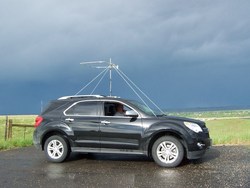
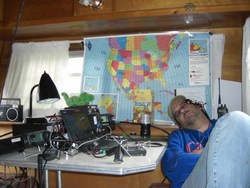
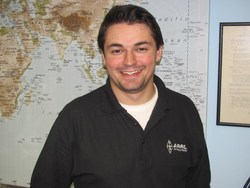
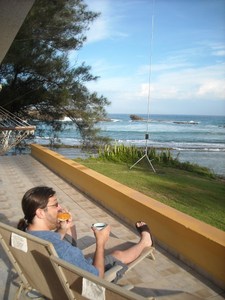
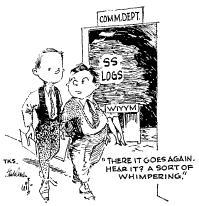
.jpg)






